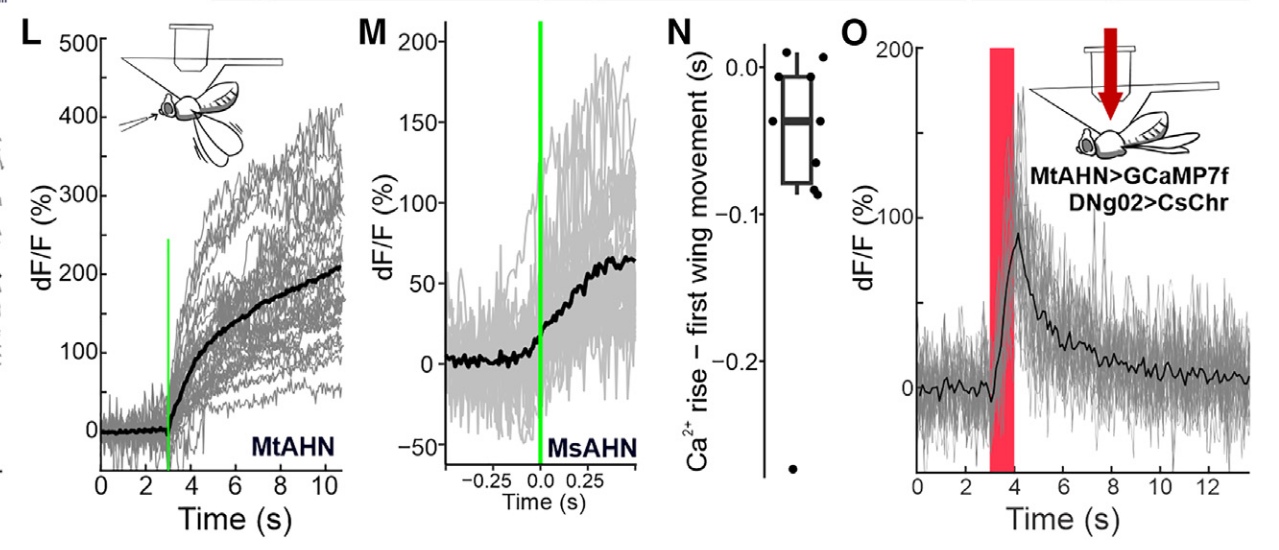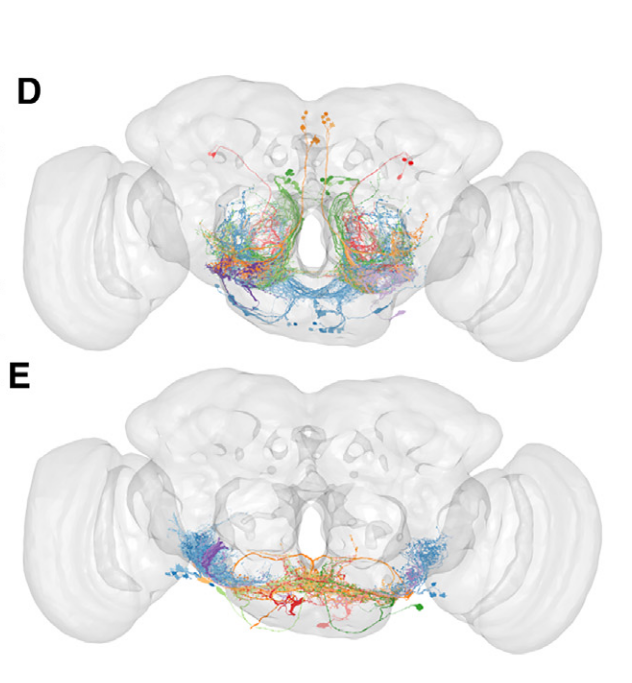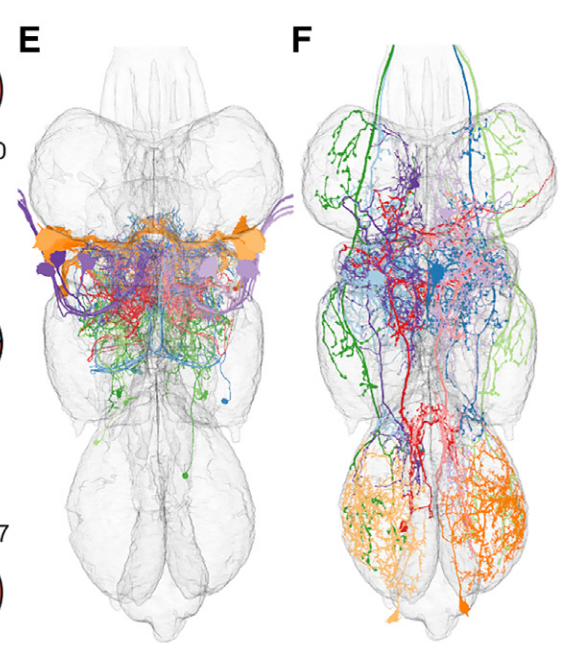Organization of an ascending circuit that conveys flight motor state in Drosophila
authors: Han S.J. Cheong, Kaitlyn N. Boone, Marryn M. Bennett, Farzaan Salman, Jacob D. Ralston, Kaleb Hatch, Raven F. Allen, Alec M. Phelps, Andrew P. Cook, Jasper S. Phelps, Mert Erginkaya, Wei-Chung A. Lee, Gwyneth M. Card, Kevin C. Daly, Andrew M. Dacks
doi: 10.1016/j.cub.2024.01.071
CITATION
Cheong, H. S. J., Boone, K. N., Bennett, M. M., Salman, F., Ralston, J. D., Hatch, K., Allen, R. F., Phelps, A. M., Cook, A. P., Phelps, J. S., Erginkaya, M., Lee, W.-C. A., Card, G. M., Daly, K. C., & Dacks, A. M. (2024). Organization of an ascending circuit that conveys flight motor state in Drosophila. Current Biology, 34(5), 1059-1075.e5. https://doi.org/10.1016/j.cub.2024.01.071
ABSTRACT
fleeting notes
-
animals move in order to drive self induced sensory activation.
-
animals differentiate between internal and external sensory info through corollary discharge circuits
-
corollary discharge circuits - provide predictive motor signals from motor pathways to sensory processing
-
2 pairs of ascending histaminergic neurons that function as CDC in other insects
-
both AHNs receive input from partially overlapping populations of descending neurons
- lots of input fro DNg02 - controls wing motor output
-
AHN activation is correlated to flight behavior and precedes wing motion
-
opto activation of DNg02 is sufficient to activate AHNs
-
AHNs target sensory processing networks and networks for sensorimotor control
-
AHNs provide predictive motor signal about wing motor state
-
to distinguish reafference from exafference, the brain uses feedforward circuits called corollary discharge circuits
- these provide predictive motor info to sensory and motor pathways
-
CDCs are essential for animal to effectively use sensory information to make adaptive choices that optimize behavioral performance
-
there are a small number of histaminergic neurons that project through central brain
- drosophila have 2 pairs of histamine neurons that are ascending to the brain. the others are in the abdominal ganglion and do not ascend
-
diphtheria toxin used to test driver lines and histamine expression
-
located driver lines using FAFB, FANC, and MANC
- in the brain used arborization patterns and morphology to identify the neurons
- in the vnc, used soma location and morphology to identify the neurons
- used NBLAST to identify neuron similarity
-
confirmed with DenMark imaging that they found the AHNs in connectomes and driver lines
-
AHNs receive a lot of input from descending neurons in the connectome
- DNg02 provides large proportion of input to AHNs
ascending neurons tune sensorimotor behaviors
-
AHNs are active with induction of flight, in part to excitatory input from DNg02
- and this activity precedes wing movement
- activation of these neurons do not induce flight
-
majority of input to AHNs are inhibitory neurons
-
one of the AHNs has only Johnston organ neurons as its sensory output.
-
AHNs participate in a wing feedforward network with DNg02
- each AHN pair targets different sensorimotor processes
- the feedforward network likely modulates flight power output
-
each AHN pair receives similar input about the wing state and then sends this information broadly to the rest of the VNC
highlights
“Natural behaviors are a coordinated symphony of motor acts that drive reafferent (self-induced) sensory activation”Page 2
“animals readily differentiate between these sources of sensory signals to carry out adaptive behaviors through corollary discharge circuits (CDCs)”Page 2
“AHNs provide a predictive motor signal about wing motor state to mostly non-overlapping sensory and motor networks”Page 2
“This established that individual MsAHNs arborize within both the ipsilateral and contralateral MsNm and prothoracic neuromeres (ProNm) before ascending to the brain to innervate the SEZ, SAD, and posterior slope”Page 3
“Using their unique morphology, we then located candidate MsAHNs and MtAHNs within three large CNS electron microscopy (EM) volumes, the full adult fly brain26 (FAFB), the female adult nerve cord27,28 (FANC) and the male adult nerve cord29,30 (MANC) datasets”Page 3


